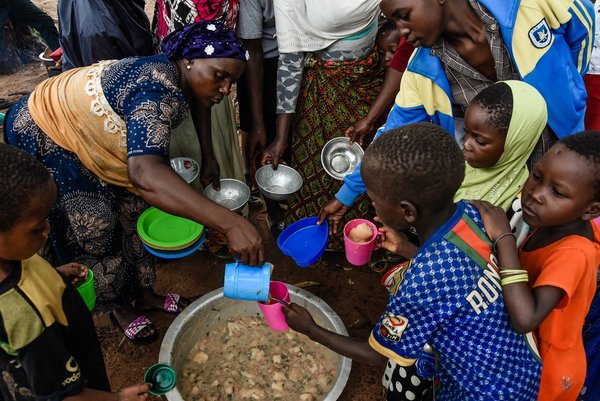 Read this article in French
Read this article in French- Share this article
- Subscribe to our newsletter
Food prices are fuelling hunger world-wide
Food prices for people in poor countries are still much higher than they were before the COVID-19 pandemic. This is demonstrated by a report published by the international relief organisation World Vision in February 2024. Prices have above all continued to rise in those countries suffering from violent conflicts, extreme weather incidents and displacement of people. Nine of the ten countries with the highest food costs in comparison to average income are in sub-Saharan Africa.
The food price analysis conducted by World Vision in September 2023 shows that an average employee in Burundi needs 36 days to earn the money needed for a basket full of staple food, while this takes 25 days for an employee in the Central African Republic. In Australia, Ireland or Singapore, the same amount of food merely costs the equivalent of 1.5 hours of work.
Mary Njeri, Global Hunger Response Director at World Vision, explains: “These figures underscore the alarming food crisis; 35 million people are currently suffering acute hunger. The world-wide economic turbulences brought about by COVID-19, the war in Ukraine, but also the increasing impacts of climate change and other conflicts are leading to it becoming especially difficult for the poorest population groups to obtain staple food. Eggs, milk or chickens shouldn’t be a luxury. They belong to the most essential food to sustain a balanced diet. Everyone ought to be able to afford them.”
In addition to global developments, local conflicts are leading to further price hikes. In Burkina Faso and Sudan, for example, prices in the conflict areas were up to twice as high as in regions less affected by violence. In addition, many of these countries are particularly strongly affected by climate change. In turn, this affects tensions in the countries as many families struggle to have enough to eat or seek a safe place to live in.
Each year, 39 to 50 billion US dollars is needed to prevent 3.7 millions children from starving. However, since 2015, only a tenth of the money has arrived. According to World Vision, the consequences are dramatic. Impoverishment is raising the probability of children being forced into child marriages or child labour, since their families are desperately seeking a safe place to sleep and something to eat. These children need perspectives for the future.
(World Vision/ile)
Read more in the World Vision website (in German)





Add a comment
Be the First to Comment